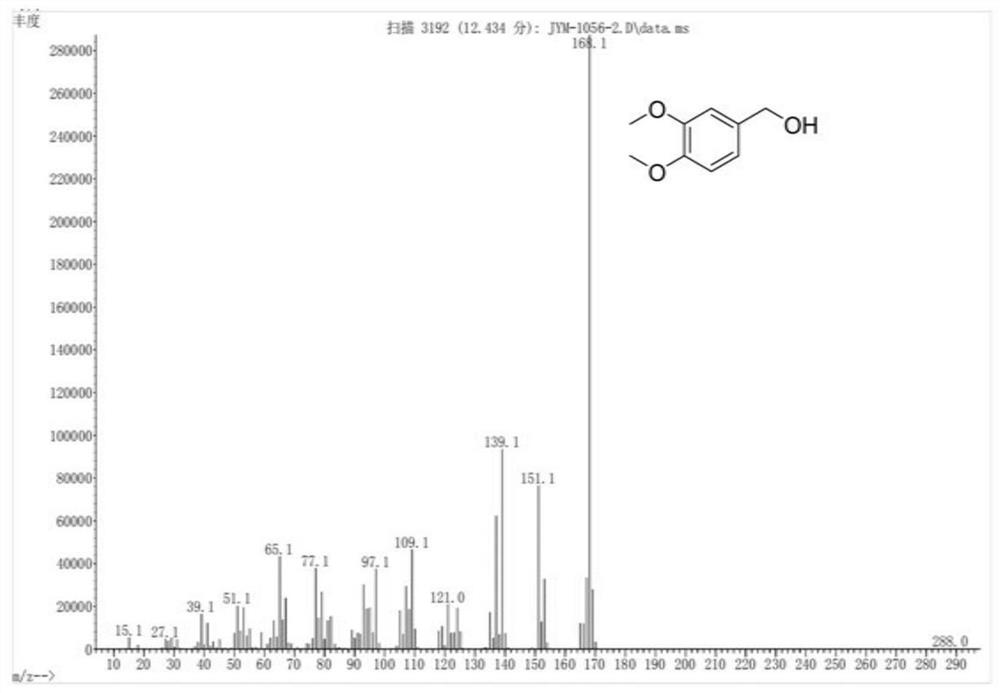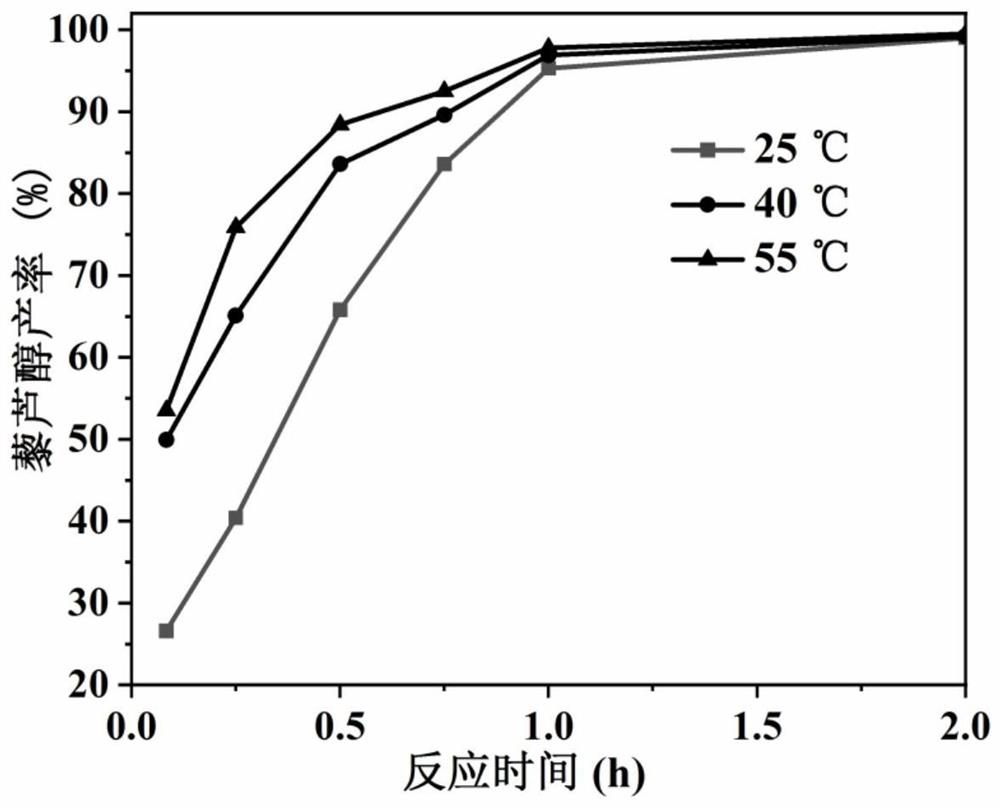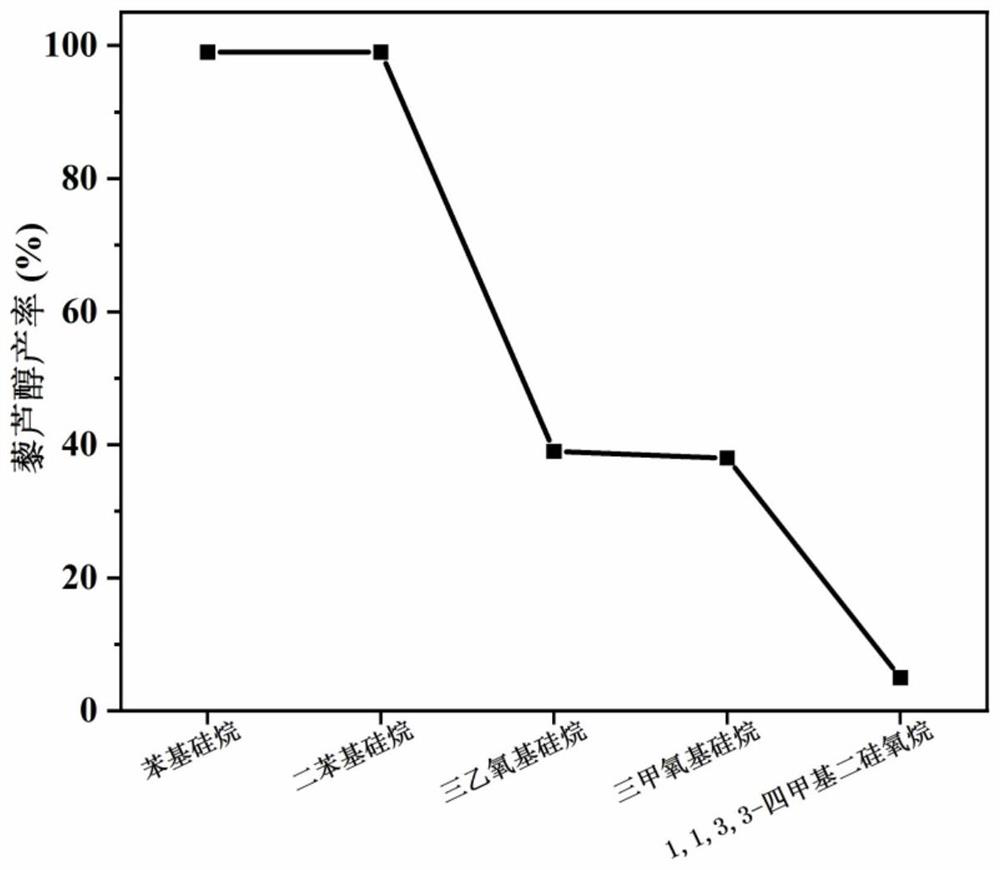Rapid synthesis method of biomass-based aromatic alcohol
A technology based on aromatic alcohols and synthesis methods, which is applied in the field of rapid synthesis of biomass-based aromatic alcohols, can solve problems such as environmental pollution, and achieve the effects of improving safety and economy, high alkali content, hydrophobicity, and good divergence
- Summary
- Abstract
- Description
- Claims
- Application Information
AI Technical Summary
Problems solved by technology
Method used
Image
Examples
Embodiment 1
[0033] Example 1: Rapid synthesis method of biomass-based veratrol
[0034]Veratroaldehyde (0.5 mmol), eggshell-derived catalyst (1.8 mol %), solvent DMSO (2 mL), hydrogen source diphenylsilane (1.1 equivalents of H - ) and naphthalene (0.015 g) as an internal standard were added to a 15 ml pressure-resistant tube, the reactor was sealed and placed in an oil bath that had been raised to a specified temperature, and the reaction time was set. After the reaction stopped, 1 mL of water was added to quench the reaction. The liquid mixture was filtered with a filter membrane (pore size: 0.22 μm) before qualitative and quantitative analysis and was diluted by adding 3 mL of DMSO-free, and then identified by gas chromatography-mass spectrometry (Agilent 6890 nitrogen gas chromatography / 5973 mass spectrometry), and all products were identified by gas chromatography (Agilent 7890B) Analysis was performed using an HP-5 column (30 m x 0.320 mm x 0.25 micron) equipped with a flame ioniza...
Embodiment 2
[0035] Example 2: Preparation of Waste-Derived Calcium-Based Catalysts
[0036] Collect discarded egg shells, shells or bones, and wash them with deionized water for 3 to 5 times to remove the attached dust and impurities; manually remove the shell membrane, and use distilled water to wash some viscous organic substances on the inner surface again; Dry in an oven at ~100 °C for 8 ~ 10 h; then in a muffle furnace at a temperature of 400 ~ 1000 °C in air for 1 ~ 3 h to prepare a CaO catalyst. A mixture of CaO, glycerol and methanol with a molar ratio of 1:9:80 was added to a round-bottomed flask equipped with a magnetron, a thermometer and a reflux condenser, and the mixture was heated to 60-100 °C and stirred for 6-10 h. The obtained precipitate was centrifuged and washed with methanol and then dried to obtain a waste-derived calcium-based catalyst.
Embodiment 3
[0037] Embodiment 3: the rapid synthetic method of biomass-based veratrol
[0038] The catalyst was replaced with a bone-derived catalyst (1.8 mol%), and the others were the same as in Example 1. The conversion rate of veratrol (97.4%) was determined, and the yield of veratrol was 95.4%.
PUM
 Login to View More
Login to View More Abstract
Description
Claims
Application Information
 Login to View More
Login to View More - R&D
- Intellectual Property
- Life Sciences
- Materials
- Tech Scout
- Unparalleled Data Quality
- Higher Quality Content
- 60% Fewer Hallucinations
Browse by: Latest US Patents, China's latest patents, Technical Efficacy Thesaurus, Application Domain, Technology Topic, Popular Technical Reports.
© 2025 PatSnap. All rights reserved.Legal|Privacy policy|Modern Slavery Act Transparency Statement|Sitemap|About US| Contact US: help@patsnap.com



